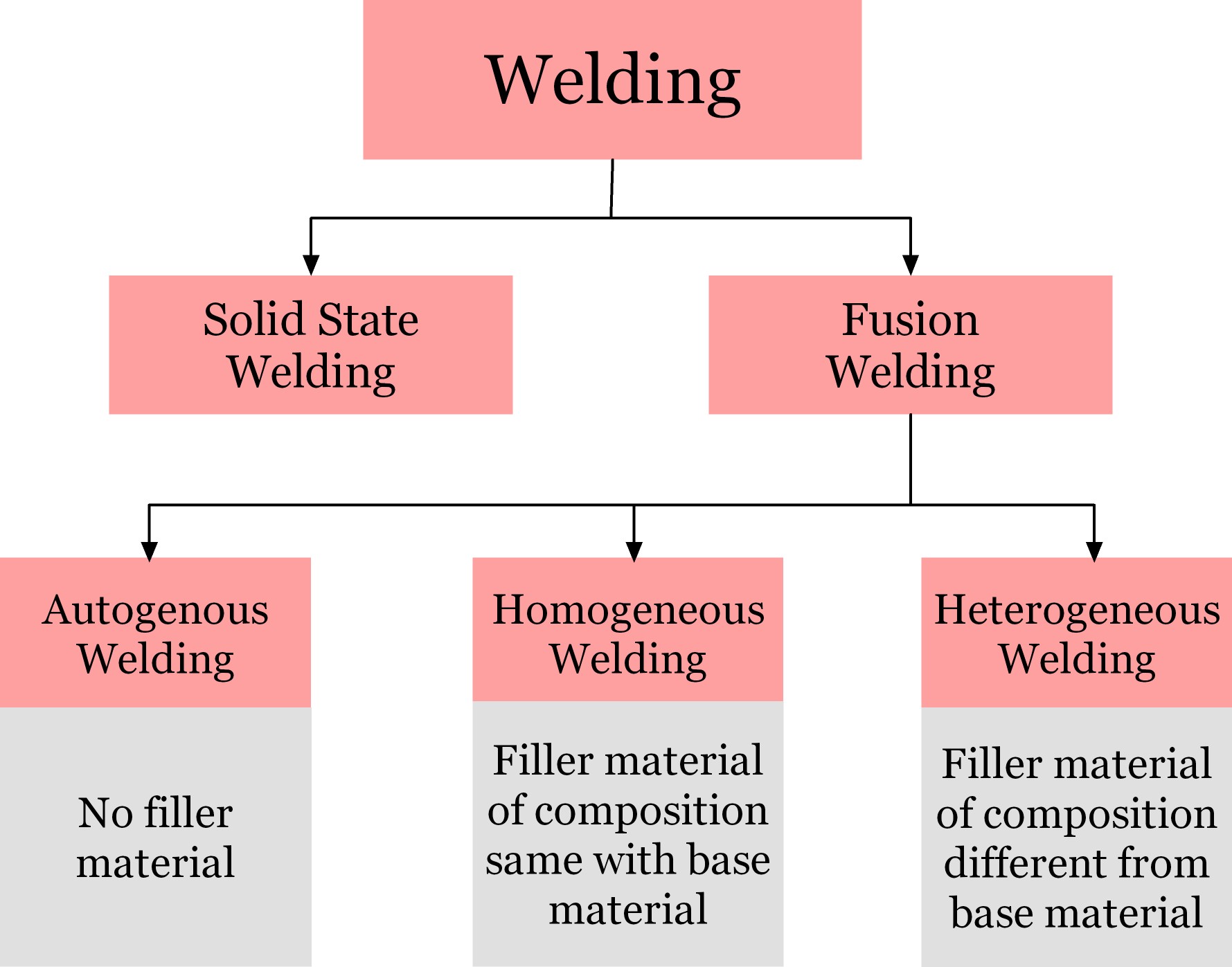Welding processes can be broadly classified into two groups—Fusion welding and Solid-state welding. Fusion welding comprises all those welding processes where heat is directly applied from an external source in order to fuse or melt faying surfaces of base metals to form weld bead. This heat can be applied in various means, such as by electric arc, burning oxy-fuel gas, etc. On the other hand, solid-state welding processes need external pressure to make joining. In such processes heat may inherently produce internally, but direct application of heat is not required for joining.
- Read more: Classification of welding processes.
Classification of fusion welding processes—Autogenous, Homogeneous & Heterogeneous
While joining by fusion welding processes, filler material can be applied during welding, if required. Due to application of external heat, this filler material melts down and deposits on weld bead to supply excess material required for filling the root gap for obtaining a sound weld. It is to be noted that application of filler material is not necessary; it is usually applied when sufficient root gap exists or edge preparation is conducted. According to the application and nature of filler material, fusion welding processes can be grouped into three categories—Autogenous welding, Homogeneous welding and Heterogeneous welding.

What is homogeneous welding? – Examples
Homogeneous welding is one way of performing fusion welding with the application of external filler material whose metallurgical composition is almost same with that of the base metals. Thus in homogeneous welding, filler material having composition same with that of the base metal is applied. It is to be noted that homogeneous welding is not a particular type of welding process like MMAW, TIG, GMAW, etc.; instead, it is one of the three different ways of performing fusion welding.
Manual Metal Arc Welding (MMAW), Gas Metal Arc Welding (GMAW), Flux Cored Arc Welding (FCAW), etc. always use consumable filler material and thus can be performed in homogeneous mode. Homogeneous welding by Tungsten Inter Gas (TIG) welding process is also possible. However, oxy-fuel welding processes (also known as gas welding) cannot be performed in homogeneous mode as they do not use filler material in usual cases (they are mainly autogenous welding). Various advanced welding processes, such as Plasma Arc Welding (PAC), Laser Beam Welding (LBW), Electron Beam Welding (EBW), etc. are also mostly autogenous.
- Autogenous welding – example, advantage & disadvantage.
- Heterogeneous welding – example, advantage & disadvantage.
- Difference between homogeneous and heterogeneous welding.
Advantages of homogeneous welding
- Thick plates can be welded efficiently with proper edge preparation.
- Strength of the joint is excellent—better than autogenous welding.
- Due to sufficient supply of molten metal, tendency of crack formation during solidification reduces.
- Welding of various joints, like butt joint, lap joint, tee joint, corner joint, etc. are possible.
- Joints are more reliable—less chance of failure if welded properly.
Disadvantages of homogeneous welding
- Not possible for joining of very thin sheets (causes distortion).
- Excess filer material causes reinforcement on weld bead, which are required to remove after welding by grinding (mandatory post-processing).
- Appearance of weld bead is not good.
- Presence of filler sometime causes sputter.
- Extra cost for filler material and also its maintenance.